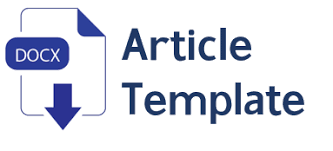Code Switching in Discussion Activities in English Class
DOI:
https://doi.org/10.29408/veles%20journal.v4i1.1797Keywords:
code switching, discussion activity, student’s presentation, billingualism.Abstract
This study is aimed to find out the types and to explain the function of code switching which are produced in discussion activities in English class. Qualitative approach is used in this study. The result showed that the total number of code switching made by twelve students in discussion activities was 165 utterances. Based on grammatical classification, it was found 77 utterances or 46,67% for inter-sentential, 61 utterances or 36,97% for intra-sentential and 27 utterances or 16,36% for tag-switching. Based on contextual classification, it was found 106 utterances or 64,24% for situational and 59 utterances or 35, 76% for metaphorical. The function of code switching was often used by the students was emphasis the meaning of utterances. It holds 45 utterances or 27,27% from all utterances. Finally, it can be concluded that code switching cannot be avoided because basically they are not students who take English as their major so they lack of English and also code switching happened in order to make understandable meaning among them.
References
Appel, R & Mysken P. (1987). Language contact and bilingualism. London: Edward Arnold.
Bloom, J.P. and J.J. Gumperz. (1972). Social Meaning in Linguitic Structure. Cambridge: Cambridge University Press.
CNN Indonesia, Tim. (2018, September, 19). Fenomena Campur Aduk “Bahasa Anak Jakselâ€. Retrieved from https://www.cnnindonesia.com/gaya-hidup/20180919154522-282-331461/fenomena-campur-aduk-bahasa-anak- jaksel.
Deibert, Anastasia. (2010). Code Switching in Bilingual Communication (Master Thesis, University of Stuttgart, 2010). Retrieved from https://www.grin.com/document/266431
Gumperz, J.J. (1982). Discourse strategies. Cambridge: Cambrige University Press. Hudson, R.A. (1996). Sociolinguistics (2nd ed). Cambridge: Cambridge University Press.
Marasigan,Elizabeth. (1983). Code- Switching and Code Mixing in Multilingual Societies. Singapore: Singapore University Press.
Poplack, S. (1988). “Contrasting patterns of code switching in two Communities,â€in Code switching: Anthropological and Sociolinguistic Perspectives,ed. M. Heller (pp.215-244). Berlin: Mouton de Gruyer.
Puspitawati, Indah. (2018). Teachers‟ Use of Code Switching in EFL Classroom and Its Functions. Journal of Foreign Language Teaching and Learning 3(1), 42-51. Retrieved from http://journal.umy.ac.id/index.php/FTL/article/view/3535 Romaine, S. (1995). Bilingualism. Oxford: Basil Blackwell Ltd.
Wardhaugh, Ronald.(1976). The Context of Language. Massachusetts: Newbury House Ronald.
Weinreich, Uriel. (1953). Languages in Contact. The Hague-New York: Mouton.
Downloads
Published
How to Cite
Issue
Section
License
Authors who publish with VELES agree to the following terms:
- Authors retain copyright and grant the journal the right of first publication with the work simultaneously licensed under Creative Commons Attribution-ShareAlike 4.0 International License (CC BY-SA 4.0).
- Authors can enter into separate, additional contractual arrangements for the distribution of the journal's published version of the work (e.g., posting it to an institutional repository or publishing it in a book), with an acknowledgment of its initial publication in this journal.
- Authors are permitted and encouraged to post their work online (e.g., in institutional repositories or on their website) before and during the submission process, as this can lead to productive exchanges and earlier and greater citations of published work.
VELES is licensed under a Creative Commons Attribution-ShareAlike 4.0 International License.





